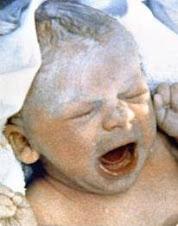DEALING WITH IVF FAILURE
Couples who undergo IVF treatment usually have very high expectations. There is a subconscious reluctance to admit that they might very well be among the unsuccessfully treated patients although it is still clear that failure is more likely than success.
IVF is an expensive and stressful experience which increases our expectations of the process. Expectations of success are considerably higher than the success rates quoted at their initial consultation.
The endpoint of IVF treatment, which is the transfer of two or sometimes three embryos into the uterus, is not the same as a pregnancy. There is a waiting period of about two weeks after the embryo transfer before it can be determined whether the woman has achieved pregnancy. This further increases the frustration of the process.
A success rate of 25-30% means that the failure rate is 75-85%. No one likes to think about failure when embarking on a new venture. There are very few medical programmes where emotions are so highly charged and where the failure rate consistently exceeds the success rate.
Treatment can fail at any stage: ovarian stimulation, egg collection, fertilization, cleavage and implantation. All that IVF demands of the person – financial, emotional, fear coupled with courage and determination potentates failure.
Any woman who decides to make the financial outlay for IVF and subject herself to the inconvenience of injecting herself everyday for up to three or four weeks expects to get pregnant from the process and the disappointment of failure becomes much more acute.
Two of the most traumatic points of failure are failure in fertilization and the return of the menses, which results from a failure in implantation. There is a feeling of isolation, confusion and helplessness and you ask, “what went wrong?”
Sometimes, one never really knows why it has failed despite the ‘good’ prognosis (relatively young age, normal uterus, high quality embryos transferred) but it is helpful to discuss with the doctor and embryologist who saw the embryos and can give an assessment. The unexplained situation is always the most difficult to bear. Failure is often easier to bear when we can pinpoint a reason for that failure.
A review of the treatment cycle by looking at the ways in which a couple responded to the drug stimulation: number of eggs collected, semen issues, fertilization and the grading of the embryos, etc., may give some clues as to how to adjust a repeat treatment.
After experiencing a failure, there is often considerable merit in delaying the decision to undergo a repeat cycle treatment.
If you have had more than one failed IVF, consider changing clinics, especially if your doctor doesn’t have a change in protocol planned.
Remember that all cycles are not alike. Using the exact same protocol on another attempt even at the same clinic can lead to different results. (Rachel Browne)
References:
‘The Bridge Clinic’s ‘Fertility Update’ September 2005 Vol No 3
‘Birthright,’ August 2005
HOW MANY TIMES CAN I DO IVF?
It is difficult to determine how many treatment cycles any particular couple will require to conceive a pregnancy. Some couples achieve a pregnancy after one cycle, some after two, some after three but most couples without major problems will conceive within four to five cycles. Three major factors are the low pregnancy rate, cost and the emotional stress associated with the treatment. It is very important for couples to receive the appropriate level of counseling and information before so as to manage their expectations before embarking on IVF treatment.
Friday, December 28, 2007
Subscribe to:
Post Comments (Atom)
| Powered By widgetmate.com | Sponsored By Digital Camera |







1 comment:
Post a Comment